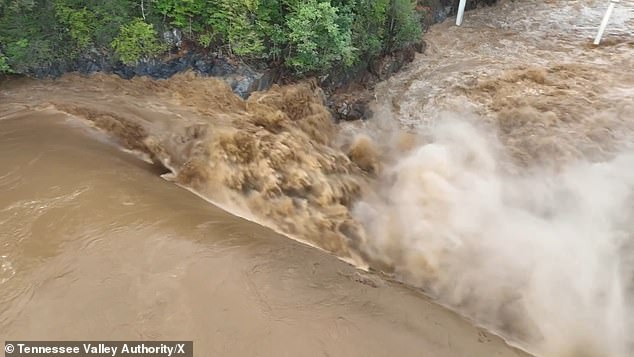Helene, which has since weakened to a post-tropical cyclone, has killed at least 55 people in five states as it battered the South with record storm surge and a tornado.
Helene looms primarily over Tennessee and Kentucky, although the edges of the storm are hitting parts of Missouri, Illinois, Indiana, Ohio, West Virginia, North Carolina, South Carolina and Georgia, according to the latest update from the National Hurricane Center.
The center predicted the storm would subside’today in tomorrow‘along the Tennessee Valley.
And as the heavy rain subsided, the center said it would stop posting hourly updates on Helene.
But devastating images show the terrible damage Helene has caused in recent days, with the most pressing problem right now being an overworked dam in Tennessee.
Pictured: The Nolichucky Dam in East Tennessee. The dam burst with 30,000 cubic feet of water per second about a day ago.
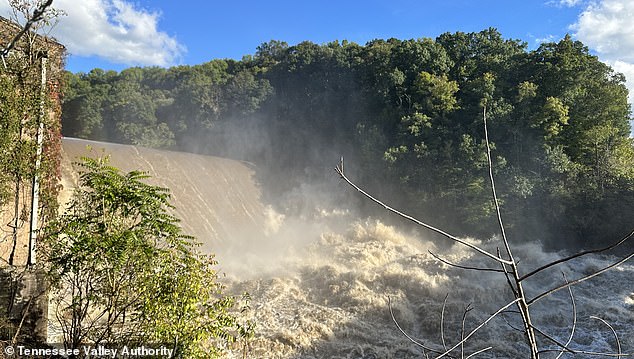
Initially, authorities were not sure the dam would hold.
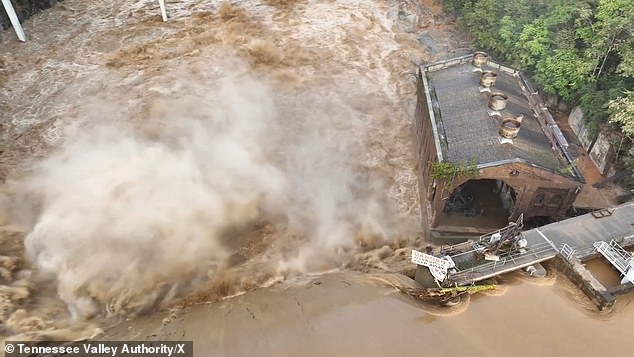
But for now, the dam remains intact, according to the Tennessee Valley Authority.
The Nolichucky Dam in East Tennessee, intended to control the flow of the Nolichucky River, was experiencing more than 30,000 cubic feet per second of water bursting about 22 hours ago, according to the Tennessee Valley Authority (TVA).
By that figure, an Olympic-size swimming pool’s worth of water flowed through the small dam every three seconds.
Authorities responded by issuing a flash flood warning for Cocke, Greene and Hamblen counties, an emergency that lasted until noon ET, according to cnn.
Approximately 5,800 residents and two schools were immediately affected by flooding from the dam.
In an update Saturday morning, TVA said the river had crested and the dam remained intact.
‘Currently the water is receding about a foot per hour. “Our Dam Safety teams are in the process of assessing the condition of the dam to determine next steps,” the agency announced. “We are estimating that water levels reached 8 feet above the record elevation.”
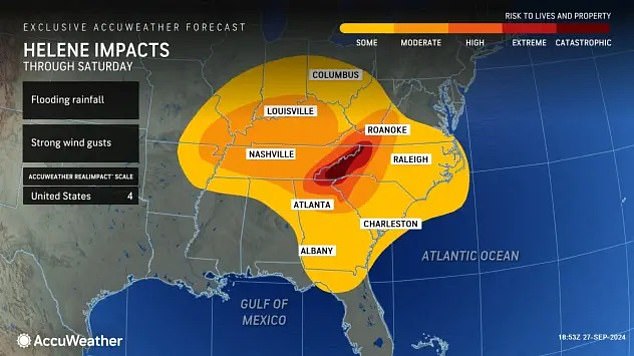
This is what Helene looked like on the afternoon of September 27, a day after making landfall as a Category 4 hurricane in the Big Bend region of Florida.
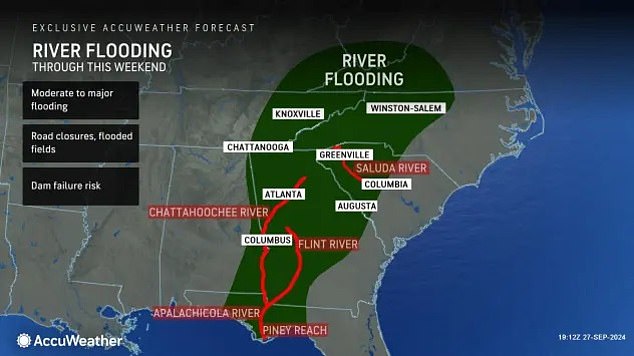
This graph shows the areas most susceptible to flooding this weekend
The storm, which made landfall in Florida’s Big Bend region as a Category 4 hurricane on Thursday, has been responsible for more than 50 deaths reported in South Carolina, Georgia, Florida, North Carolina and Virginia.
At least 19 people have died in South Carolina, including two Saluda County firefighters.
George Satcher, 53, and Landon Bodie, who was just 18, were responding to a call Friday morning and were killed when a tree fell on their fire truck. News19 reported.
“That’s a reminder that these first responders risk their lives every day to go out and protect the citizens they serve,” said David Jones of the South Carolina Highway Patrol.
In Georgia, authorities say the death toll has risen to 15, and two people died after being swept away by a tornado in Alamo.
Florida Gov. Ron DeSantis said 11 have died so far in his state, including several people who drowned in Pinellas County.
North Carolina reported six more deaths. Among them was a four-year-old girl who died in a car accident caused by wet roads.
As of Saturday morning, more than 400 roads remained closed across the state, according to North Carolina Department of Transportation.
In Craig County, Virginia, one person died as a result of a tree falling on the structure they were in, according to Governor Glenn Youngkin.
Another person died when strong winds blew up a chicken coop before landing on it. WDBJ 7 reported.
Meanwhile, many scenes in Florida seem apocalyptic.
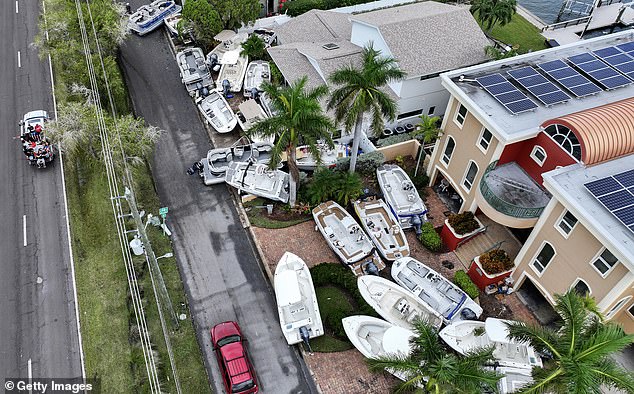
Dozens of boats appeared on the streets of Treasure Island, Florida
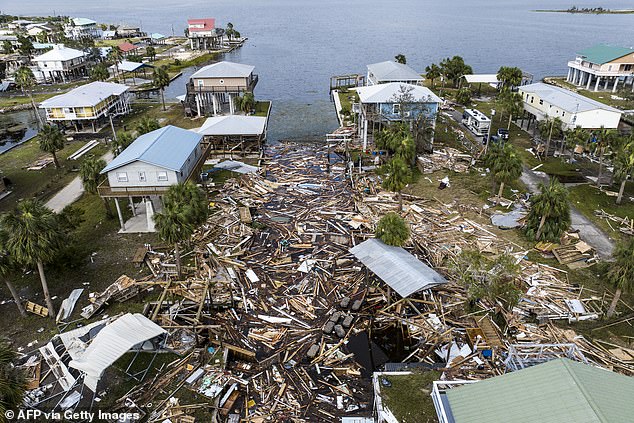
Horseshoe Beach, Florida, was a particularly hard-hit area, with entire city blocks reduced to rubble.
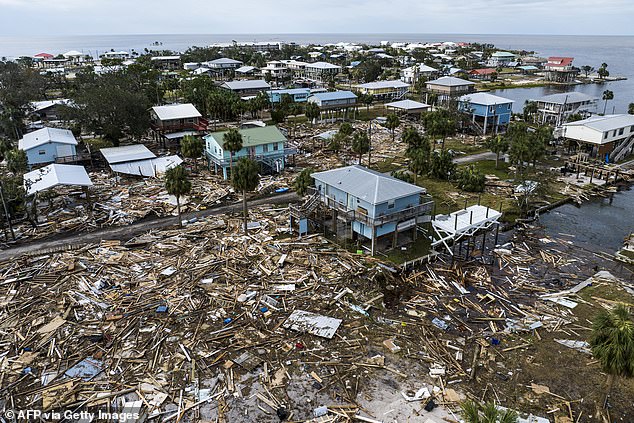
Dozens of homes and businesses destroyed after Helene made landfall
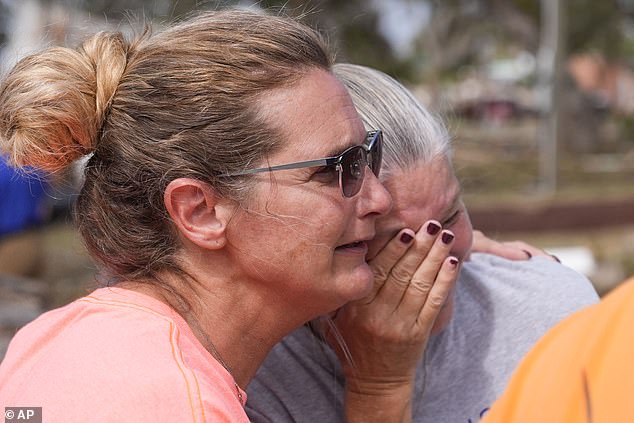
Survivors Tammy Bryan, left, hug fellow resident Jennifer Lange amid the destruction following Hurricane Helene in Horseshoe Beach on Saturday, Sept. 28.
Take Treasure Island, a city near Tampa, where dozens of boats have appeared on its streets.
Treasure Island has an elevation of 3 feet above sea level, which was no match for the roughly 7-foot storm surge seen in the Tampa Bay area.
The further you go up the west coast of Florida, the damage gets worse and worse.
Horseshoe Beach, a northern town that was much closer to where Helene landed, saw homes and businesses reduced to rubble.
Traumatized citizens cried as they saw entire blocks irradiated by the storm, leaving nothing but wooden planks and other debris.
Cedar Key, a little south of Horseshoe Beach, was also hit hard.
Michael Bobbitt, 48, was one of those who decided to stay behind.
“We feel pretty beat up here in Cedar Key. When we were fighting this at night, as bad as we thought it would be, it’s much worse in daylight.
“Cedar Key as we know it is completely gone,” he said. The New York Times.
‘Entire houses have been collected and evacuated. We had to wade through four feet of water to get to them. The post office is destroyed.’
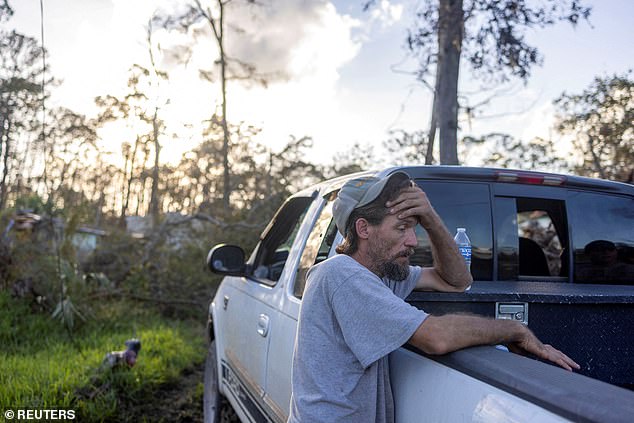
Matthew Harris leans on the bed of his truck after Hurricane Helene destroyed the home where he lived in Steinhatchee, Florida.
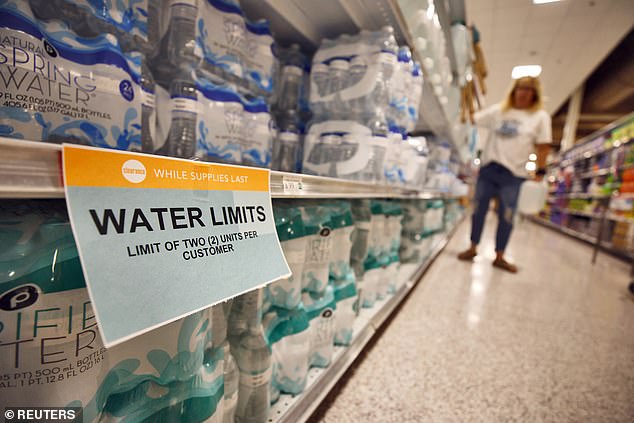
This North Carolina grocery store limits the number of packs of water bottles a customer can purchase at a time
The crisis in getting resources to people who need them, such as food and water, remains a serious problem in North Carolina.
Some grocery stores have imposed limits on the amount of water a customer can purchase to avoid shortages.
Governor Roy Cooper called Helene “one of the worst storms in modern history” for the state.
Cooper said more than 100 people had to be rescued from high water. And the particularly hard-hit city of Asheville was under curfew until 7:30 a.m. Saturday.
About 3.5 million people in 10 Southern and Midwestern states remain without power, according to poweroutage.us.
Helene arrives just under two months after Hurricane Debby made landfall in virtually the same region of Florida as Helene.
Debby was a category 1, so it wasn’t as strong, but a preliminary analysis by AccuWeather estimates it caused $28 billion in damage and economic losses.


